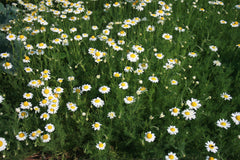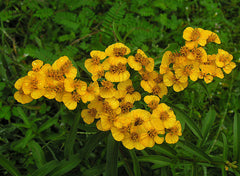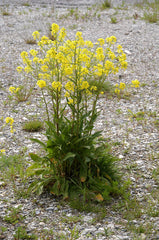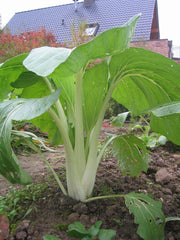Caragana arborescens, Siberian Pea Tree
Caragana arborescens, or Caragana or Siberian peashrub is a perennial shrub or small tree growing to heights of 2 to 6 metres.
The Siberian pea shrub has an excellent potential to become a staple food crop. The seed is nutritious and wholesome, although rather small it is often very freely borne and is easily harvested.
The plant is native to Siberia and parts of China and neighboring Mongolia and Kazakhstan. It is commonly grown throughout the northern hemisphere as a landscaping plant and ornamental. Typically, it has a moderate to fast growth rate, being able to grow one to three feet during the first year after trimming.
Caragana has pod fruits which contain many seeds. These ripen in July and if left, will fall off the shrub and the seeds will grow to become a new plant very near the parent shrub. The leaves of the caragana vary from light green to dark green and are alternate and compound with many small leaflets.
The plant can be grown as a hedge.
It is quite wind-resistant and can also be planted in a shelterbelt; it is extremely tough and has been used as windbreaks on the Canadian prairies.
The plant has an extensive root system and can be used for erosion control, especially on marginal land.
Because of its nitrogen-fixing capacity, it is valued as a soil-improving plant.
Somewhat showy, small, fragrant, yellow flowers bloom in spring.
The Siberian Pea Tree is oft cited as a good fodder plant to plan into a chicken run, orchard or field. If planted in with the chickens it drops good fodder straight into their foraging zone. The fruit is a pod which splits open when ripe, scattering the seed on the ground. The seed is released gradually over a number of months. In fact the chickens like the seed so much that they often can't wait for it to drop and do their best to fly up and pick it out of the pods.
A very good bee plant. The honey created has a pleasant taste, slightly 'fruity'.
Succeeds in most well-drained soils, preferring full sun and a light sandy dry or well-drained soil. Tolerates very alkaline soils. Plants do not require a rich soil, succeeding on marginal land. Established plants are drought resistant and fast growing. Annual water requirement: 305mm - 1397mm. Dormant plants are hardy to about -30°c, they prefer a continental climate and do not grow so well in areas that do not have very cold winters. They grow and fruit very well in the eastern half of the England, even in northern areas, though they do not do so well in the wetter west. The young growth in spring, even on mature plants, is frost-tender and so it is best to grow the plants in a position sheltered from the early morning sun.
Should be pre-soaked for 24 hours in warm water then sown in a cold frame. If the seed has not swollen then scarify it and re-soak for another 12 hours before sowing. Germination usually takes place within 2 - 3 weeks at 20°c. As soon as they are large enough to handle, prick the seedlings out into individual pots and grow them on in a greenhouse for at least their first winter. Plant them out into their permanent positions in late spring or early summer, after the last expected frosts.
Edible uses
The seeds can be cooked. Small but produced in abundance, there are 4 - 6 seeds per pod. A bland flavour, it is best used in spicy dishes. The seed contains 12.4% of a fatty oil and up to 36% protein, it has been recommended as an emergency food for humans. More than just an emergency food, this species has the potential to become a staple crop in areas with continental climates. The raw seed has a mild pea-like flavour, though it is not clear if it should be eaten in quantity when raw.
The yellow flowers have a taste like peas and can be used in salads to add colour and some flavour.
http://practicalplants.org/wiki/Caragana_arborescens





![Photo By Thomas888b (Own work) [CC BY-SA 3.0 (http://creativecommons.org/licenses/by-sa/3.0) or GFDL (http://www.gnu.org/copyleft/fdl.html)], via Wikimedia Commons](http://www.openpollinated.co.uk/cdn/shop/products/Calendula_in_Autumn_medium.jpg?v=1510586850)


![By Evan-Amos (Own work) [Public domain], via Wikimedia Commons](http://www.openpollinated.co.uk/cdn/shop/products/CSA-Red-Spring-Onions_medium.jpg?v=1510586802)
